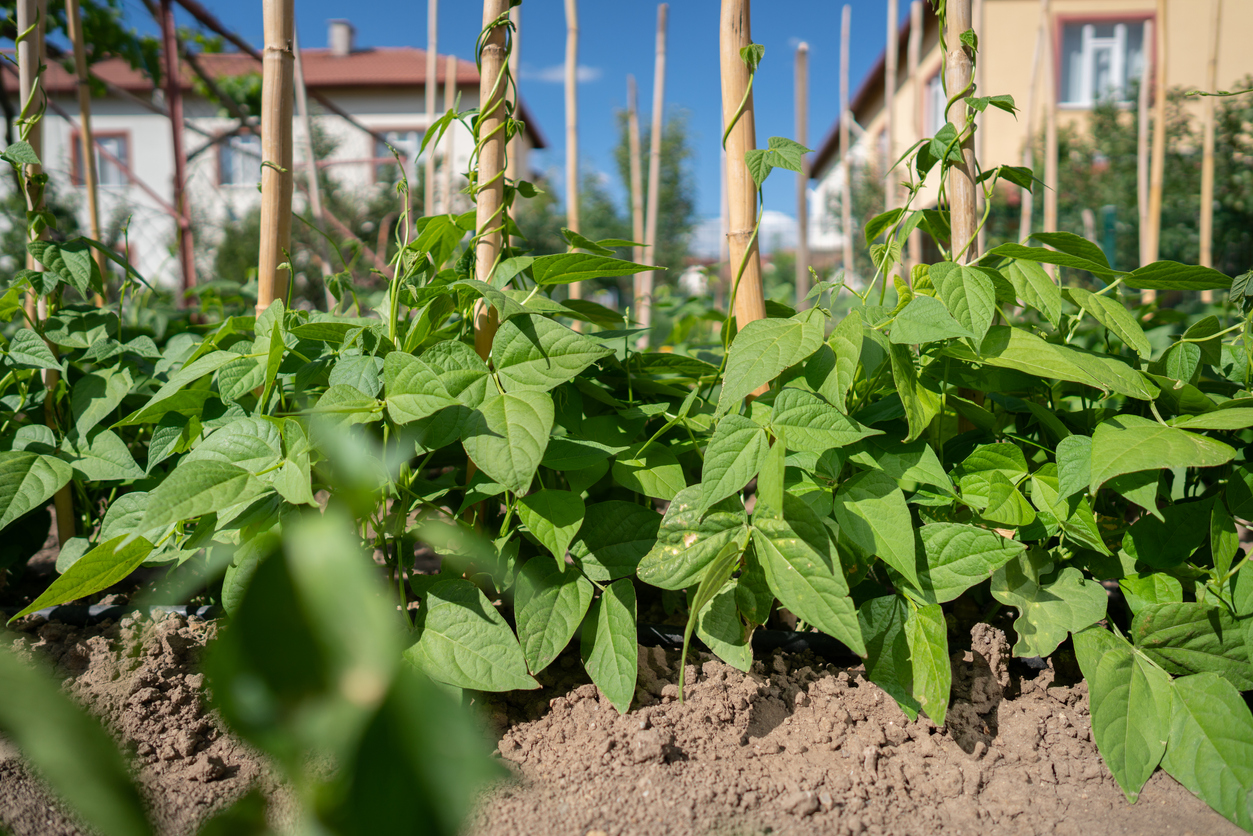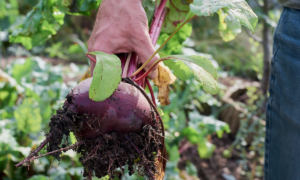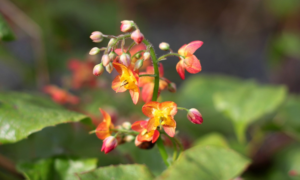We independently research, review, and recommend the best products. If you buy something through our links, we may earn a commission. Learn more.
French beans are an excellent choice for newbie gardeners keen on growing vegetables that yield heavy crops. Ideal in containers, these hardy climbers bravely battle the elements but equally thrive when we get hot weather.
In this article, I’ll disclose my secrets to growing French beans. We’ll cover everything from selecting the best bean varieties to trellising techniques. So, grab your trowels and let’s get our hands dirty.
Contents
A bit about French beans
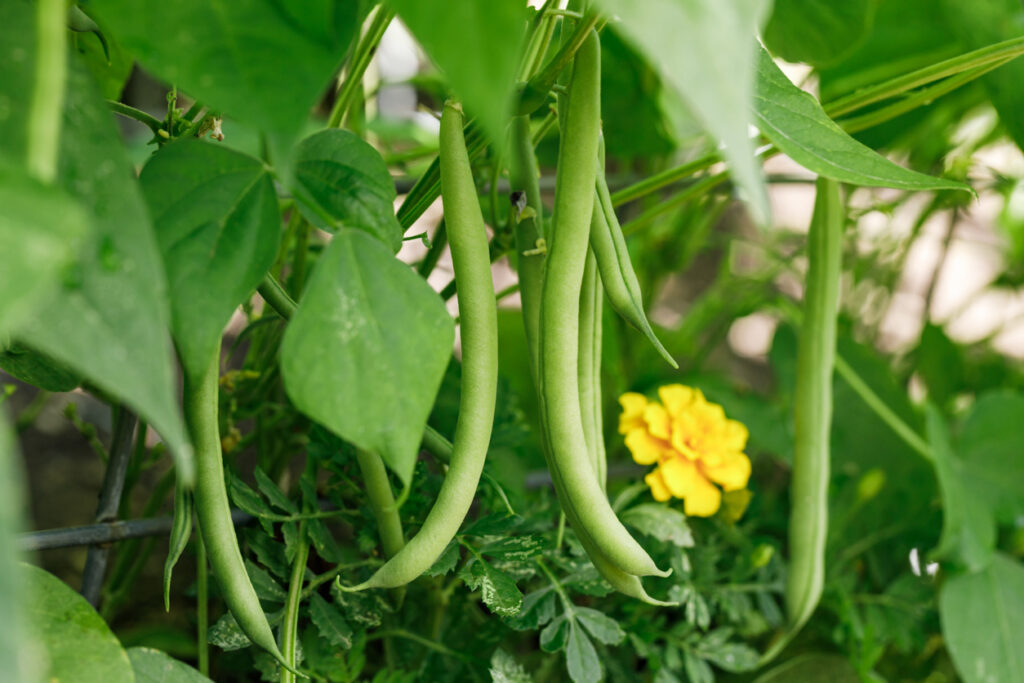
French beans come from a common plant called Phaseolus vulgaris, a flowering species part of the pea family that crops around 10–16 weeks from sowing. You can find these veggies under several names, including yard-long beans; however, what unites them all is their distinctive, fleshy pods.
Contrary to its namesake country, French beans are native to South and Central America, particularly the Andes region of Peru, Chile, Colombia, and Ecuador. These beans have grown as an indigenous crop for at least 5,000 years and fairly recently came to Europe. We know the name because Haricot verts grew in popularity as a French variety of green beans.
French beans are an excellent fibre source, packed with vitamins C and K. They’re very low on calories and contain antioxidants that help prevent cell damage.
French bean seeds
There are two types of French beans: climbing and dwarf. The former best suits ground growing and yields bigger crops, but I have successfully dabbled with containers, too. Dwarf varieties are some of the sweetest beans and love life in patio pots. However, they only crop for 3-5 weeks and require repeat sowings from mid-summer.
Need some inspiration finding French bean seeds? Here are some of my favourites:
- Bolly Bulbs® – Dwarf French Beans ‘Tendercrop’
- Mr Fothergill’s 17885 Vegetable Seeds
- Dwarf French Bean – Purple Queen
- Simply Garden Dwarf French Bean Opera Seeds
Planting French beans
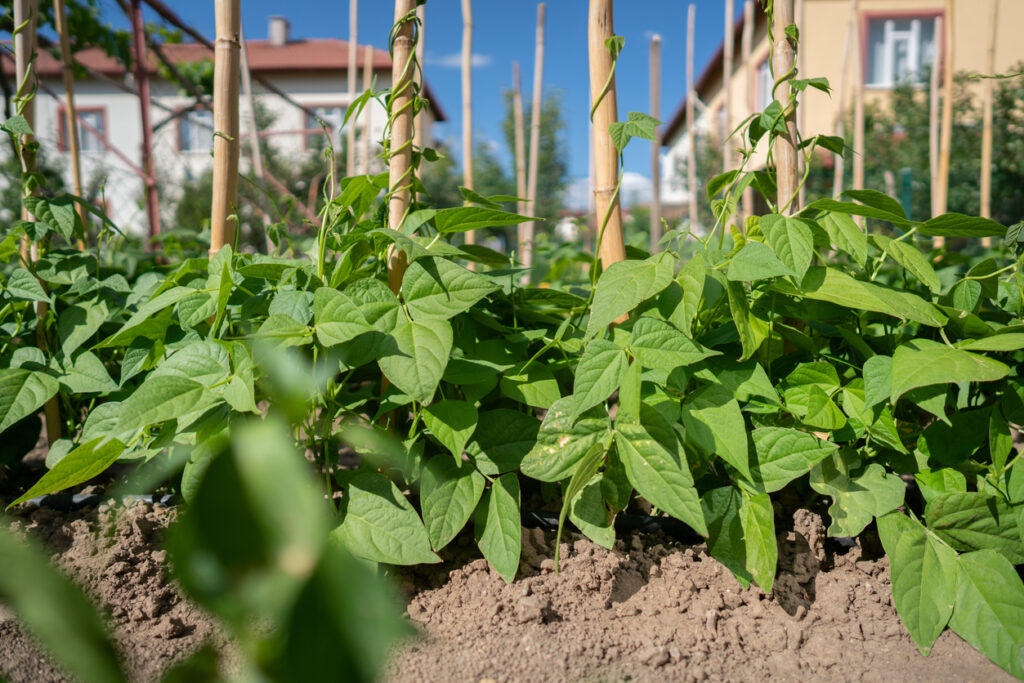
Because French beans are a cool-weather crop, they can grow in soil or containers. They’re also comfortable indoors if you want to give your plants a head start (late April or early May). If you’re a beginner green thumb, however, I recommend planting outdoors, as it’s easier, but you will have to wait until late spring. Or if you want, you can do both!
Preparing the ground
If planting seeds directly into the ground, do so after the last frost and ensure the soil has warmed. You’ll also want to give it some extra heat with the help of transparent fleece/crop covers—preferably a few weeks before sowing. Thoroughly de-weed the area. And ensure the soil is relatively loose and well-drained. Ensure no large clumps of clay or rocks are in the ground to prevent the roots from growing properly. If you’re already growing vegetables, add some compost or well-rotted manure into your soil before planting.
If, on the other hand, you’ve never grown anything before, preparing a new area for growing vegetables would be best. It can be done by digging out a small patch of ground in your garden, adding compost or manure, and any other soil amendments (such as limestone, etc) until it reaches about 15cm deep. You may also need to add some fertilisers if your soil doesn’t have enough nutrients—just ensure you do it a few weeks before sowing your French bean seeds, so the ground is settled.
There are tons of commercially-produced peat-free composts available, but I’ve enjoyed success with the following superior blend from Rocket Gro:
Planting in containers
You can also direct sow seeds into pots or containers, which can be kept indoors until temperatures outside reach at least 50 degrees Fahrenheit (10 degrees Celsius).
To plant French beans in a pot, follow these steps:
- Fill a pot around 5 inches deep with soil.
- Place three to four seeds 1/4 inch in each pot, about one inch apart.
- If you’re using dwarf beans, these are best sown in blocks or double rows.
- Cover with an additional 1/2-inch layer of soil.
- Water so the soil is moist but not soggy.
- Place pots in a sunny spot with at least 6 hours of direct sunlight daily; germination should occur within 7-10 days.
French bean soil pH Level
The pH level of your soil will affect how well your plants grow and whether they’re susceptible to disease. Ideally, you’ll want a pH between 6.0 and 6.5—if it’s too low (below 5.5), your French beans may struggle with nutrient deficiencies. If it’s higher than 7.0, it may be more susceptible to disease due to moisture loss through the soil.
How much sunlight do French beans need?
French beans need at least six hours of bright sunlight daily during summer. If you live in an area where sunlight is more limited during certain times of the year, try covering your plants with fabric that’s been soaked in water for about an hour before placing it over their heads (make sure not to let any water come into contact with their leaves). This will help keep them from drying out too quickly during those darker months when there isn’t enough light through those clouds overhead!
How to water French beans
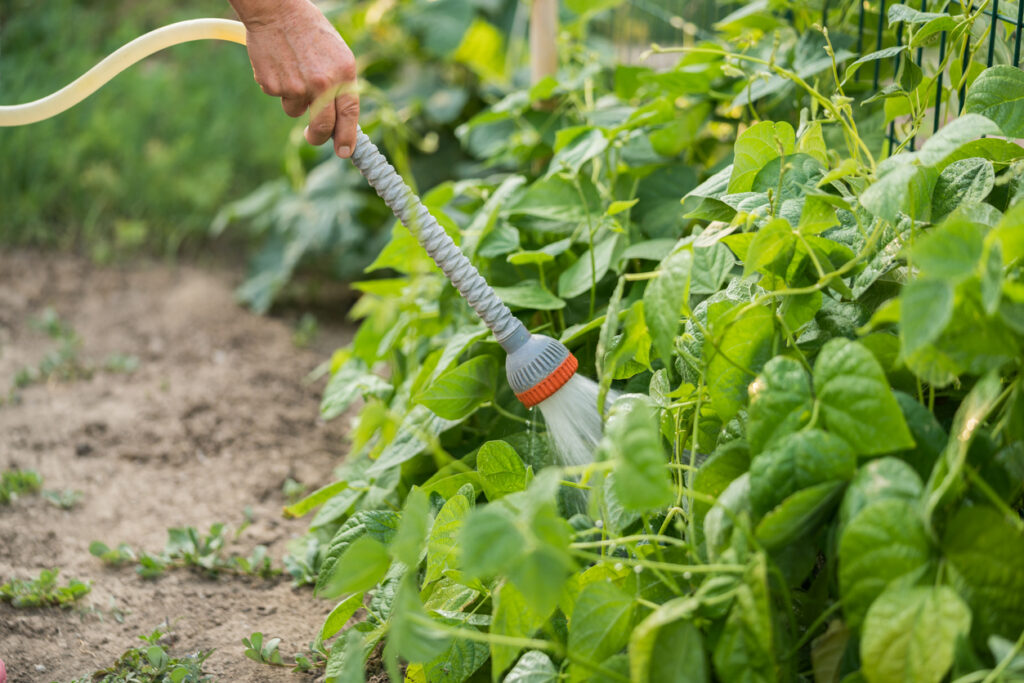
Watering your plants regularly is critical to their survival. The same is true for French beans, especially once they develop pods. You can support them by watering the plant manually or installing an automatic sprinkler system around the roots.
The best times to water your plant are early morning or late evening when temperatures are more relaxed, so less water evaporates from the soil surface. We want water to reach the root zone, where it’s needed most. If you’re growing French beans in containers, you’ll probably need to water your plants regularly, as they tend to dry out quickly.
Do I need to fertilise French beans?
Yes. French beans need fertiliser, particularly when they’re young and still growing. However, it’s worth remembering that too much fertiliser will cause the plant to grow too fast, challenging the beans. So, carefully follow the instructions on the package before use.
Here are a handful of my favourite veggie fertilisers:
- Vitax Q4 Fertiliser
- Agrigem FISH BLOOD & BONE ORGANIC FERTILISER
- Nutrigrow Growmore Plant, Tree & Vegetable General Garden Fertiliser
- Kitchen Garden Organic Liquid Fertiliser Vegetable & Fruits Stimulant
Pruning and Harvesting French beans
French beans are vigorous vines that can grow up to 20 feet long if left unchecked. So, naturally, you’ll need to prune them regularly to keep them from taking over your garden space.
Pruning should start when the plants are about 6 inches tall and continue every few weeks throughout the growing season. Do so by removing flowers on the main stem with scissors or hand shears. If you’re dealing with climbing beans, cut off extra growth to encourage lower-side shoots. It would be best to tie loose shoots to stop your plant from becoming top-heavy.
Your French beans are ready to harvest when pods are roughly 10cm long. If you don’t harvest your beans at this point, they could rot and impact further growth. You’ll know when it’s time when several pods are on each plant—ensure
the pods are firm enough not to bend easily when picked up by hand (but not so firm as they snap). If there aren’t any other signs of ripening (such as yellowing), wait another week before checking again. I recommend picking pods regularly to maximise crop yields and encourage further growth.
